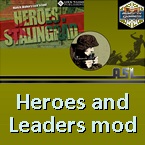asl3d
Posts: 6531
Joined: 2/6/2017
Status: offline

|
24. Italian Molotov cocktail
A Molotov cocktail, also known as a petrol bomb or just Molotov, is a generic name used for a variety of bottle-based improvised incendiary weapons. A Molotov cocktail is a breakable glass bottle containing a flammable substance such as gasoline, alcohol or a napalm-like mixture, with some motor oil added, and usually a source of ignition such as a burning cloth wick held in place by the bottle's stopper. The wick is usually soaked in alcohol or kerosene, rather than petrol.
Incendiary bottles are one of the simplest and most reliable means for destroying tanks, armored cars, transport trucks, warehouses, landed airplanes, and enemies in cover. In the hands of a brave soldier, they are a fearsome weapon. Skilled and sudden use can not only strike the enemy, but cause panic and compromise enemy organization.
When the bottles hit a solid object, the bottle breaks, and the liquid inside of it ignites, either with a match attached to the bottle, a special metallic igniter, or a capsule inside the bottle. In action, the wick is lit and the bottle hurled at a target such as a vehicle or fortification. When the bottle smashes on impact, the ensuing cloud of fuel droplets and vapor is ignited by the attached wick, causing an immediate fireball followed by spreading flames as the remainder of the fuel is consumed. Other flammable liquids such as diesel fuel, methanol, turpentine, jet fuel, and isopropyl alcohol have been used in place of, or combined with petrol. Thickening agents such as solvents, foam polystyrene, baking soda, petroleum jelly, tar, strips of tire tubing, nitrocellulose, XPS foam, motor oil, rubber cement, detergent and dish soap have been added to help the burning liquid adhere to the target and create clouds of thick, choking smoke.

 Attachment (1) Attachment (1)
_____________________________
Semper fidelis
|
 Printable Version
Printable Version





































 New Messages
New Messages No New Messages
No New Messages Hot Topic w/ New Messages
Hot Topic w/ New Messages Hot Topic w/o New Messages
Hot Topic w/o New Messages Locked w/ New Messages
Locked w/ New Messages Locked w/o New Messages
Locked w/o New Messages Post New Thread
Post New Thread